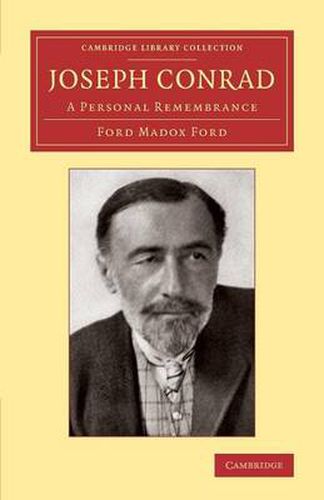Readings Newsletter
Become a Readings Member to make your shopping experience even easier.
Sign in or sign up for free!
You’re not far away from qualifying for FREE standard shipping within Australia
You’ve qualified for FREE standard shipping within Australia
The cart is loading…






Determined not to write a biography about his friend Joseph Conrad (1857-1924) in the usual dry style, Ford Madox Ford (1873-1939) instead produced a novel. As a result, some biographical facts are given less emphasis than others, in particular the acrimony which later blighted relations between the two men. But the work is distinguished by its liveliness and by a wealth of vivid detail. Ford describes Conrad’s remarkably long-eared horse, his haphazard use of adverbs and their fraught collaboration over their second joint novel, Romance, during which Ford’s carefully unexciting style provoked the adventure-loving Conrad to depression. Ford’s impressionistic portrayal of Conrad as an elegant, likeable swindler and ‘beautiful genius’ strikes a far richer chord than a purely historical account. First published in 1924, just after Conrad’s death, this work remains a striking example of creative non-fiction, instructive for scholars and students of English literature.
$9.00 standard shipping within Australia
FREE standard shipping within Australia for orders over $100.00
Express & International shipping calculated at checkout
Determined not to write a biography about his friend Joseph Conrad (1857-1924) in the usual dry style, Ford Madox Ford (1873-1939) instead produced a novel. As a result, some biographical facts are given less emphasis than others, in particular the acrimony which later blighted relations between the two men. But the work is distinguished by its liveliness and by a wealth of vivid detail. Ford describes Conrad’s remarkably long-eared horse, his haphazard use of adverbs and their fraught collaboration over their second joint novel, Romance, during which Ford’s carefully unexciting style provoked the adventure-loving Conrad to depression. Ford’s impressionistic portrayal of Conrad as an elegant, likeable swindler and ‘beautiful genius’ strikes a far richer chord than a purely historical account. First published in 1924, just after Conrad’s death, this work remains a striking example of creative non-fiction, instructive for scholars and students of English literature.